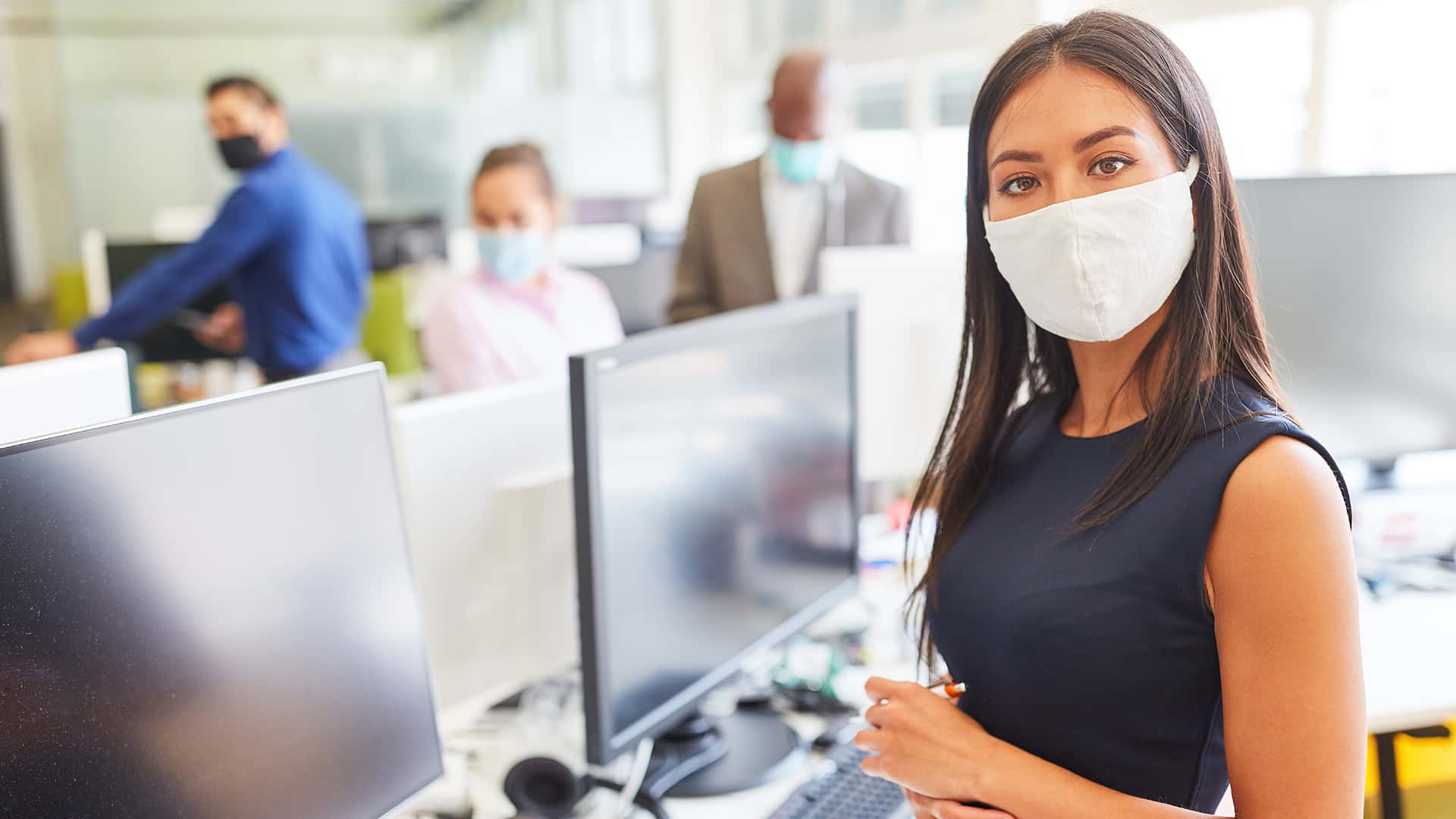The Alabama Department of Public Health: Frequently Asked Questions and Answers for Businesses about COVID-19
This following frequently asked questions and answers are to assist businesses in understanding what actions need to be taken to assure the safety of the workplace reducing the risk of spreading COVID-19. While businesses have the ability to require a negative test or a doctor’s excuse to return to work, the Centers for Disease Control and Prevention and the Department of Public Health, do not recommend that a negative test or a doctor’s excuse be required for an employee to return to work.
If an employee has symptoms for COVID-19, what type of tests should they pursue to diagnose COVID-19?
- When did the employee start having symptoms for COVID-19? (Cough, shortness of breath, fever, muscle aches, headache, sore throat, runny nose or congestion, recent loss of smell or taste, nausea, vomiting, diarrhea
- To diagnose COVID-19, a viral test, either PCR-based (polymerase chain reaction) test or viral antigen testing should be utilized.
- COVID-19 antibody tests should not be used for the purposes of diagnosing COVID-19. This is a blood test and it is not recommended by the Centers for Disease Control and Prevention (CDC) or by the Alabama Department of Public Health (ADPH) for the purposes of diagnosing COVID-19 or for determining immunity to this disease.
What should be done if an employee tests positive for COVID-19?
- In the event that an employee tests positive for COVID-19, a designated company representative should begin to obtain the following information:
- When was the employee last present at work?
- Does the employee have symptoms, or do they have no symptoms?
- When did they first develop symptoms?
- If the employee was (or is) having symptoms, the company representative will need to start determining contacts in the workplace beginning 2 days prior to symptom onset.
- For example, if an employee had a cough and fever on 06/03/2020, then contacts in the workplace would need to be determined from 06/01/2020 until their last day on the job.
- If the employee was not having symptoms, it is more difficult to determine when they may have become contagious. Therefore, a company representative will need to determine contacts for the employee starting 10 days prior to the day they were tested and going until their last day on the job.
- If the employee was (or is) having symptoms, the company representative will need to start determining contacts in the workplace beginning 2 days prior to symptom onset.
- What defines a close contact?
- A close contact is defined as a person who has been within 6 feet for 15 minutes or greater of someone who has tested positive for COVID-19.
- It is critically important that an employee’s privacy is maintained. Their name should NOT be disclosed to other employees as this is protected health information as regulated under the Health Insurance Portability and Accountability Act of 1996 (HIPAA).
- If you have not yet been contacted by the local health department, please call your local county health department to seek out specific guidance for your organization.
If an employee has been in contact with someone who has been a contact to another person with COVID-19, do they need to be excluded from work?
No, the employee would not need to be excluded from work in this situation unless they have been directly in contact with someone who has tested positive for COVID-19.
Who should be excluded from work?
- Any person tested for COVID-19 should be excluded and not allowed to return to work until the final test results are provided and they have been given instructions on isolation and quarantine. A negative test does not mean that a person is not infected, and instructions may require them to continue to stay home.
- Employees who have been directed to remain home should not return to work until their isolation/quarantine period has expired. This includes all persons who meet the definition of close contact, having spent 15 minutes or more (cumulative), closer than 6 feet with a confirmed or probable COVID-19 case.
- Anyone who has tested positive for COVID-19 should be excluded from the workplace as defined by the quarantine order issued from the Alabama Department of Public Health.
- Persons who have tested positive but have no symptoms should also be excluded from the workplace. Even in the absence of symptoms, COVID-19 can be passed from person to person.
What if an employee lives in the same household as someone who has tested positive for COVID-19?
- In the event that a member of an employee’s household tests positive for COVID-19, the employee should be excluded from the workplace for 14 days after the last exposure to the confirmed positive. This could mean that the person has to be excluded from work as long as 28 days. If a person has tested positive for COVID-19 and they live in the same household as the employee, there is a very high chance that COVID-19 could have been transmitted to that employee.
- Before returning to work, an employee who has a household contact who has tested positive for COVID-19 should be assessed for symptoms.
- They should have no fever for at least 3 days without fever reducing agents, and they should be assessed for symptoms such as cough, fever, muscle aches, or changes in smell/taste.
When is the best time for an employee to be tested after an exposure?
- Because of the biology of SARS-CoV-2, the virus that causes COVID-19, a person will not immediately test positive after exposure. It may take between 4- 6 days after exposure before a person will test positive for COVID-19.
- We do not recommend immediately testing after exposure. However, quarantine is needed for a person who has had a significant exposure. They should avoid being around other people until 14 days past last exposure.
- If an employee is tested immediately after exposure, the negative test does not indicate that they do not have COVID-19. Therefore, it is still important that they be isolated.
If an employee has had a significant exposure AND they had a test 4-6 days after that exposure, will they be able to come back to work if they had a negative test result for COVID-19?
- No. Even with a negative test result a person who has had a significant exposure to COVID-19 will need to be excluded from work for 14 days.
- Once exposed to COVID-19, it can take up to 14 days before a person begins to show symptoms. Therefore, those who are exposed to COVID-19 should isolate at home for 14 days.
- If they develop symptoms during this time, they will need to pursue testing. If testing is positive, the employee will be required to quarantine to prevent further spread of the virus.
What if an employee has tested positive for COVID-19 and they have been without fever for three days? Will they be able to come back to work immediately?
- No. It is critically important that at least 10 days have passed since symptom onset AND they have been without fever for 3 days without the use of fever reducing medications. ADDITIONALLY, they need to have an overall improvement in their symptoms prior to returning to work.
- For individuals who have no symptoms, they will need to be excluded from work for 10 days from the date of their diagnostic test.
- Returning to work before these conditions are met will significantly increase the risk of spreading COVID-19, and this may further impact business operations.
Is there a way to obtain additional paid sick leave for my employees?
- Yes, this is through H.R. 6198 – Emergency Paid Leave Act of 2020.
- For each 30-day period, the Social Security Administration must pay two thirds of an eligible employee’s average monthly pay to a maximum of $4,000. Emergency Paid Leave benefits are available for up to 90 days from the period during which an employee first files an application for such leave. Available benefits for emergency paid leave are reduced proportionally by any amount of paid leave an employee receives from the state or employer during each 30-day period.
- This funding is available until December 31, 2020.
My employee has provided a quarantine letter stating that their quarantine ends on a particular date. Is there any additional documentation that is needed?
- No. Once the terms of an employee’s quarantine letter have been fulfilled, they are released from quarantine. No additional documentation is needed.
One of my employees recently tested positive for COVID-19, what should I do to clean their area and workspace?
- For more detailed information, please refer to the following website: www.cdc.gov/coronavirus/2019-ncov/community/guidance-business-response.html
- Wait 24 hours before cleaning and disinfecting to minimize potential for other employees being exposed to respiratory droplets. If waiting 24 hours is not feasible, wait as long as possible.
- Comprehensive guidance for cleaning and disinfection procedures can be found at: www.cdc.gov/coronavirus/2019-ncov/community/reopen-guidance.html
- If 3 days or more have passed since the last exposure to a person who has tested positive for COVID-19, an area will only need standard cleaning.
- A comprehensive list of approved disinfectants against COVID-19 can be found at: www.epa.gov/pesticide-registration/list-n-disinfectants-use-against-sars-cov-2-covid-19



